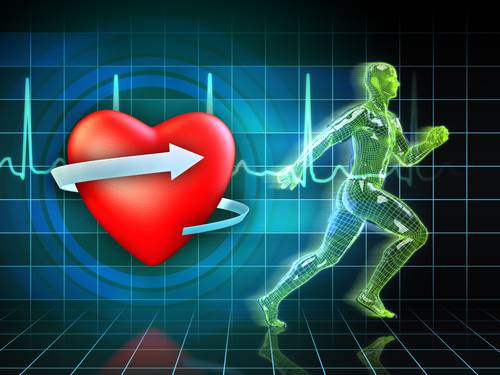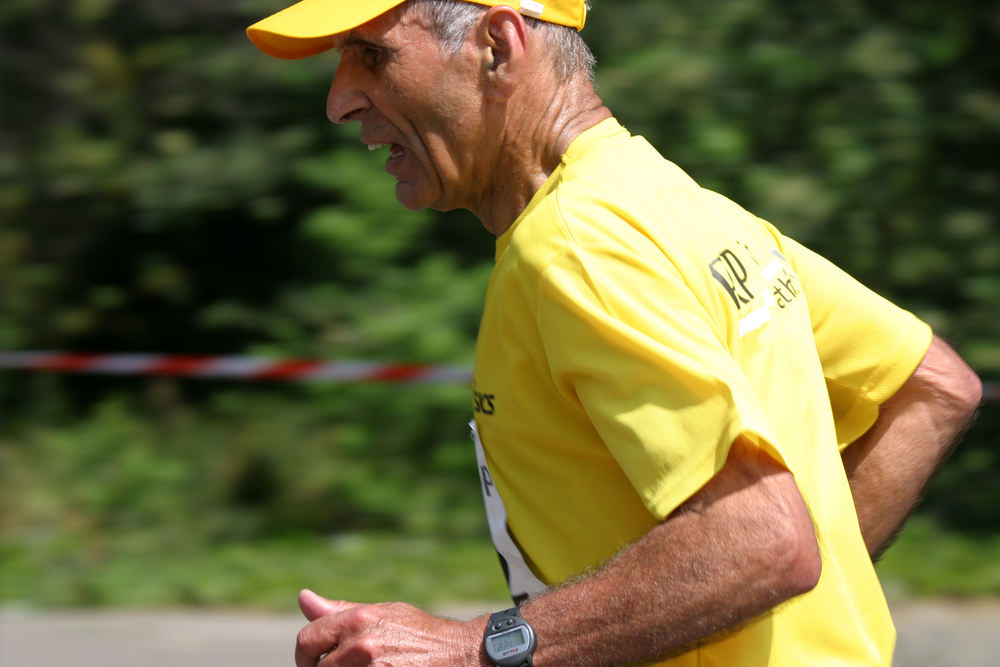Over the last few years I’ve heard a pile of excuses why running is bad for you.
“It raises cortisol.” So does anything that elicits a training response.
“Running makes you skinny fat.” Only if you choose to eat poorly.
“Cardio makes you weak.” The toughest people I know are all endurance athletes.
“Who would you rather be built like, a sprinter or a marathoner?” This gem is from someone who has no real understanding of the role genetics play in how you look regardless of how you choose to train.
“I learnt to fight so I didn’t have to learn to run.” Muhammad Ali ran a lot and believed it helped his legs late in a championship fight. Bruce Lee ran, too. So has every top fighter since the dawn of time. SEALs sure know how to fight, but they all run.
Because We Can Run
At the end of the day most of the responses to why people don’t like to run come down to one thing in my eyes – people don’t run because they suck at it. There’s a good reason why people are transfixed in watching the Olympics every four years and why the most watched events are the running races. Because deep within us is the DNA that helped us become the apex predator of the animal kingdom, and all of it came because we can run.
Way back when we were just figuring out how to get out of the trees we had a rival, Neanderthal man. Homo sapiens wasn’t as strong as Neanderthal, but we were smarter, dealt with heat better, and we could run far. Unlike our prey in the animal kingdom we don’t need to stop to cool ourselves down. We have this amazing mechanism of heat regulation achieved by sweating. Poor Neanderthal with their heavier structures and fast twitch fibers literally couldn’t stand the heat when they ran fast, leaving all the tasty antelope to us. And so, we eventually became more numerous and beat them out of the top spot.
And all because we can run.
If you’re reading this, then you know that exercise is the gift of life. Edward Stanley said, “Those who think they have not time for bodily exercise will sooner or later have to find time for illness.” One of the biggest mistakes people make when looking at health, and particularly the best ways to prevent aging, is to just think about muscles. But there is more than one type of muscle and the skeletal muscle – those that you actually flex and extend when working with weights – represents only one type.
Our Heart Is a Muscle
Along with skeletal muscle there is also smooth muscle, which is the type of muscle found in the intestines and that helps move food through the body during digestion. But central to everything we do is the heart. Our life-giving pump is a muscle, and a special type of muscle. The heart can actually be trained just like regular muscle, and it benefits from being systematically stressed and allowed to adapt. As it strengthens, it allows for a larger amount of blood to be pumped per stroke via enlarged chambers of the heart, which serves to lower the heart rate at all points, whether at work or rest. In addition, the heart muscle itself becomes capable of pumping harder per stroke with a stronger contraction.

Somehow we seem more concerned with what is external – the show muscles – and not with what is internal and most central to our lives. With a weak heart you can’t expect to lead much of a life. While there have been many advances in terms of taking people’s training out of the dark ages of bodybuilding and machines to a more functional mindset, we still seem overly concerned with elements of performance and forget that central to being a specialist like a weightlifter or a strength athlete, we first need to ensure we maintain the innate material that keeps us human. And running is central to that, as without it we’d have never gotten enough food to survive.
People will tell you that preventing muscle wasting is the most important aspect of anti-aging and that strength is the most important element to train. Well, yes, it is an important element, but like with most things in life there is no “one thing” that will be the most useful in health, but rather an assortment of methods needed to bring about both health and fitness.
Maintaining Our Muscle Mass (and Heart)
While it is true that we lose muscle mass as we age (and people panic about it in my opinion). What is evident if you dig deeper is that we can stave off much of this wastage as we age if we continue training. It’s generally acknowledged that skeletal muscle deteriorates between the ages of fifty and sixty, as characterized by the following:1
- Muscle strength is relatively well maintained up to age fifty. After fifty it declines at a rate of 15% per decade up to age eighty, at which point it declines a further 30%.
- Peak muscle mass is at age 24 and falls by about 10% by age fifty. After fifty it accelerates and you lose another 30% by age eighty.
- The loss of muscle is from both fast and slow twitch fibers. While the slow twitch fibers retain their size, even though they diminish in number, the fast twitch fibers actually decrease in size compared to their peak size.
So as we age we absolutely should be making sure to keep strength training in our plan because we want to keep our body as able as possible for as long as possible. But what about the heart?
As the central piece to life it needs to be kept in shape. Booth did another study showing that life will terminate when VO2 reaches the basal rate of three.2 He predicted that a VO2 of between fifty and sixty at age twenty would hypothetically see people live to 100 to 125 years, providing other diseases didn’t intervene. With the high average VO2 being 55, it is entirely reasonable to suggest that if you stay active and keep the heart working you stand a good chance of making it to 100.
Accommodations as You Age

While there are many positives to staying active as you age, and deliberately including running in your training, there are downsides, too. One of the effects of aging is the reduction of strength in muscle fibers, both through physical loss as well as decrease in size. This means that landing forces involved in running will take more of a toll on the body. The best way to get around this is to use a two-part strategy:
- Decrease total miles run or raced. This keeps exposure to possible damage lower. It’s also important to realize as you age that recovery ability decreases, so each session requires more recovery to get the most out of the next one.
- Consider the use of cross training methods such as swimming, riding, and rowing, which have less impact and are more oriented towards strength endurance than running, which tends towards pure endurance.
I’m a big believer in doing what we are born to do. Some people are built to be really strong, or fast, or go for long periods of time. But we are all built to run. That running has come to be seen as an evil part of the exercise world stems more, in my opinion, from people knowing they suck at it and trying to rationalize their way out of doing it. The years spent sitting that all adults have gone through, first through school, then college, and then in the workforce, have all been instrumental in the body rebelling against the world’s oldest form of exercise.
While running can be problematic if you try to do too much too soon, if you build up slowly, then you’ll find adding some easy runs into your training makes you feel better – and actually helps you recover better between hard strength efforts. The heart is a muscle, too, and your body will thank you for making it stronger along with the more obvious show and performance muscles.
References:
1. Booth FW, Weeden SH, Tseng BS., “Effect of aging on human skeletal muscle and motor function.” Med Sci Sports Exerc. 1994 May;26(5):556-60.2.
2. Booth FW., “VO2max limits.” J Appl Physiol (1985). 1989 Sep;67(3):1299-300.
Photo 1 by U.S. Navy photo by Matt Mogle [Public domain], via Wikimedia Commons.
Photos 2 & 3 courtesy of Shutterstock.






